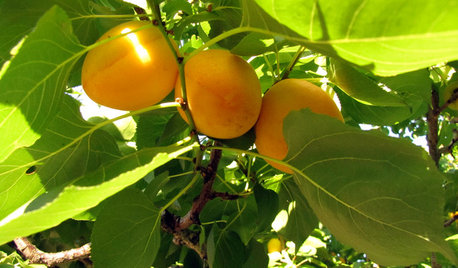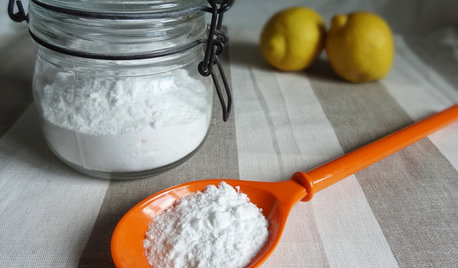Those fragile N. apricots
alan haigh
10 years ago
Related Stories

EDIBLE GARDENSHow to Grow Your Own Apricots
Velvety fruit, pretty blossoms and interesting bark make apricot trees a delight — and they’re great for smaller gardens
Full Story
GARDENING GUIDES5 Prairie Wildflowers That Can Heal Your Soil
Get free, organic soil fertilizer with nitrogen-pumping plants that draw pollinators too
Full Story
LIFEHow to Prep Your Home for Summer Fun
Create a relaxed, beach-ready vibe with these ideas that let good times roll
Full Story
SELLING YOUR HOUSESave Money on Home Staging and Still Sell Faster
Spend only where it matters on home staging to keep money in your pocket and buyers lined up
Full Story
DECORATING GUIDESOrganized Chic: 15 Stylish Ways With Trays
Keep things neat, give yourself a treat or display unexpected art. These ideas will have you looking at your trays with new eyes
Full Story
DECLUTTERINGDecluttering — Don't Let Fear Hold You Back
Sure, you might make a mistake when tackling a decluttering project, but that's OK. Here's why
Full Story
HOUSEKEEPINGBaking Soda: The Amazing All-Natural Cleanser You Already Own
Battle grime, banish odors and freshen clothes with this common nontoxic cupboard staple
Full Story
COLOR12 Fresh Palettes for Color Lovers
These unexpected color pairings create compelling displays in everything from powder rooms to great rooms
Full Story
LIFEThe Moving-Day Survival Kit: Lifesaving Items and Niceties
Gather these must-haves in advance for a smooth move and more comfortable first days in your new home
Full Story
GREEN BUILDINGWhy You Might Want to Build a House of Straw
Straw bales are cheap, easy to find and DIY-friendly. Get the basics on building with this renewable, ecofriendly material
Full StoryMore Discussions






mattpf (zone4)
mattpf (zone4)
Related Professionals
Eden Prairie Landscape Architects & Landscape Designers · Graham Landscape Architects & Landscape Designers · Middle Island Landscape Architects & Landscape Designers · Westwood Landscape Contractors · Waterbury Landscape Contractors · Americus Landscape Contractors · Bowie Landscape Contractors · Davis Landscape Contractors · Dunwoody Landscape Contractors · Hendersonville Landscape Contractors · Mercedes Landscape Contractors · Pahrump Landscape Contractors · Sammamish Landscape Contractors · Wentzville Landscape Contractors · Suisun City Landscape Contractorsfruitnut Z7 4500ft SW TX
alan haighOriginal Author
marknmt
fabaceae_native
mattpf (zone4)
treehugger2012
alan haighOriginal Author
fruitnut Z7 4500ft SW TX
alan haighOriginal Author
fabaceae_native
alan haighOriginal Author
fabaceae_native
ottawan_z5a
alan haighOriginal Author